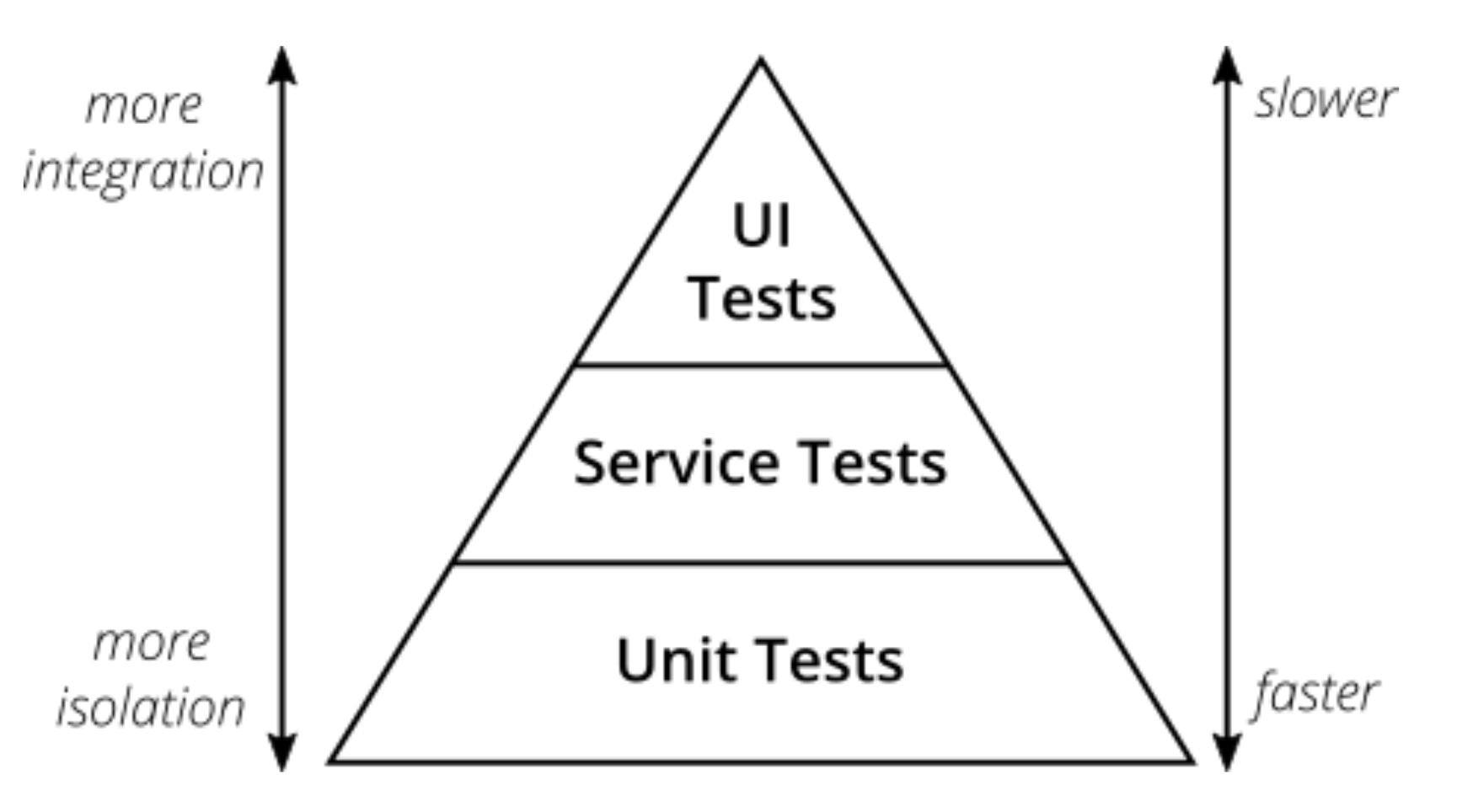Testing
Your tests should be:
Automated
Tests should be automated. They should be run as part of the build process. They should be run as part of the deployment process.
Reliable
Tests should be reliable. They should not fail randomly. They should not fail when the system is under load.
Fast
Tests should be fast. If they are slow, they will be ignored.
Repeatable
Tests should be repeatable. They should be able to run in any environment. They should be able to run in parallel.
Maintainable
Tests should be maintainable. They should be easy to understand. They should be easy to write. They should be easy to maintain.
Types of testing
UI tests are more valuable as they are closer to the user but they are more expensive to write and maintain. Unit tests are faster and easier to write.
The number of tests should be a structured as a pyramid: more tests to the lower layer of the pyramid and less at the end-to-end layer.
Unit Tests
Write lots of small and fast unit tests. Unit tests are targeted at an individual class level, each class generally have a corresponding test class that tests the internals of that class.
They should ensure that all your non-trivial code paths are tested (including happy path and edge cases).
Integration tests
Integration tests test the integration of your application with all the parts that live outside of your application.
Write integration tests for each integrated application in isolation.
Use the Arrange, Act, Assert pattern:
| Integration with REST API | Integration with DB | |
|---|---|---|
| Arrange | 1. Start your application and stubs (e.g. WireMock) | 1. Start your application and database |
| Act | 2. Invoke the function in your application that requests the response from the 3rd party | 2. Invoke the function in your application that writes the data to the DB |
| Assert | 3. Verify that your application deserialise the response correctly | 3. Inspect the DB whether the data being written correctly |
UI tests
Have a small number of tests that run with the full stack deployed in a real environment that is as close to production as possible.
Put extra effort into making sure the tests are reliable.
